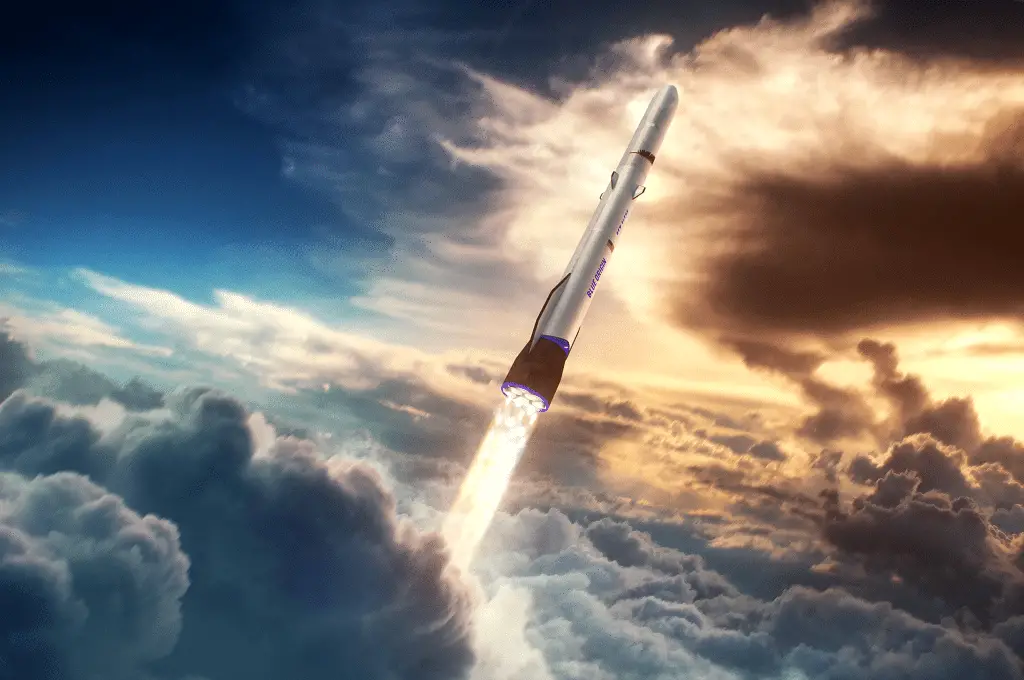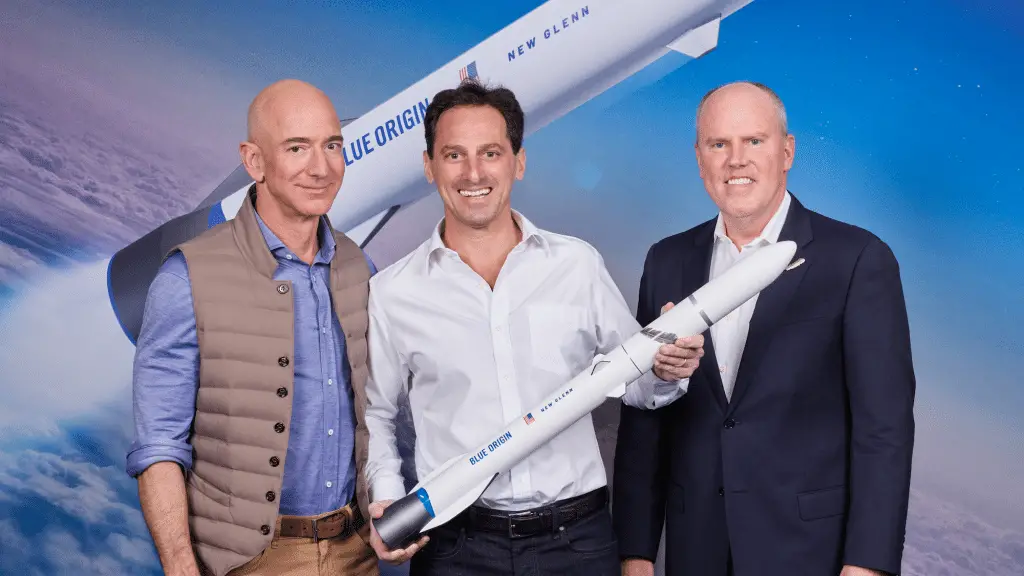Blue Origin, the space company founded by Jeff Bezosis ready to take a significant step in the field of space exploration with its heavy rocket New Glennand with only 40 days left before the first launch, scheduled for October 13, 2024, the company still has many challenges to face and goals to achieve, among which one of the most crucial is the rocket second stage ignition testwhich was recently transported to the launch pad at Cape Canaveral Space Force Station’s Launch Complex 36.
The New Glenn rocket represents years of development and innovation for Blue Origin, built in the company’s factory in Merritt Islandthe rocket is designed to long duration missions and for the transport of heavy loads in space.
The first flight of New Glenn, designated NG-1, aims to launch two RocketLab-built satellites on a mission for NASA called ESCAPE (Escape and Plasma Acceleration and Dynamics Explorers), satellites that will study the magnetic fields and plasma of Mars during an 11-month journey to the Red Planet.
The New Glenn rocket represents a significant technological leap for Blue Origin, considering that its development required years of research and innovationculminating in a spacecraft that promises to revolutionize the heavy-lift industry. Blue Origin’s rocket was designed to be reusablewith the first stage capable of performing at least 25 flights.
This approach not only reduces costs, but also the environmental impact, making space launches more sustainable.
The New Glenn is powered by seven BE-4 engineswhich use liquid oxygen and liquefied natural gas as propellants, engines that I am among the most powerful ever builtwith a combined thrust of nearly 3.9 million pounds (1.769 billion KG) on takeoff.
The second stage of the rocket, instead, is powered by two BE-3U engineswhich are optimized for performance in space and can be restarted multiple times, offering great flexibility for missions, and will also be responsible for the deployment of the ESCAPADE satellites.
This test burn is a critical step in ensuring everything works properly during launch, with Blue Origin itself having already demonstrated its ability to recover and reuse rockets with its smaller New Shepard, which has successfully flown to suborbital orbit.

That said, Blue Origin’s New Glenn is a much more ambitious projectwith a first stage measuring 188 feet tall that will be recovered on a recovery vessel in the Atlantic, similar to the system used by SpaceX.
The recovery ship, recently arrived at Port Canaveral, has been named “Jacklyn” in honor of Jeff Bezos’ mother, and this first stage of New Glenn is powered by seven BE-4 engines, the same ones used in the new Vulcan rockets from the United Launch Alliancemaking New Glenn more than twice as powerful as SpaceX’s Falcon 9.
In summary, the launch of New Glenn represents a Crucial moment for Blue Originmarking the culmination of years of work and innovation, and with the second stage test firing imminent, the company is preparing to demonstrate his ability to compete in the heavy space launch market and contribute significantly to space exploration.
History of New Glenn
The first flight of New Glenn, designated NG-1, has an ambitious goal: to send two satellites built by RocketLab on a mission for NASA called ESCAPADE. These satellites will study the magnetic fields and plasma of Marscontributing to a better understanding of the Red Planet and its interactions with the solar wind, with the ESCAPADE mission just one of several that Blue Origin plans to support with New Glenn, which is designed to carry a wide range of payloads, from commercial satellites to scientific missions.
With just 40 days remaining before launch, Blue Origin is in a race against time to complete all necessary preparations,
In addition to engine testing, Blue Origin must complete a number of other activities, including engine integration, the arrival of the Jacklyn recovery vessel, and the preparation of the launch infrastructure, with each step being crucial to ensure a successful launch and demonstrate New Glenn’s ability to compete in the heavy space launch market.

Implications for the future
The successful launch of New Glenn could have profound implications for the future of space exploration, as with its ability to carry heavy payloads and its reusability, the rocket could significantly reduce the cost of space launchesmaking access to space more accessible for a wide range of customers, from government agencies to private companies.
Ultimately, New Glenn could play a key role in future human exploration missions, with the rocket designed with the safety and redundancy needed to carry humans, paving the way for more ambitious missions, such as returning to the Moon and, possibly, exploring Mars.
If you are attracted by science or technology, keep following us, so you don’t miss the latest news and updates from around the world!
#Blue #Origin #Days #Launch #Glenn #Rocket
